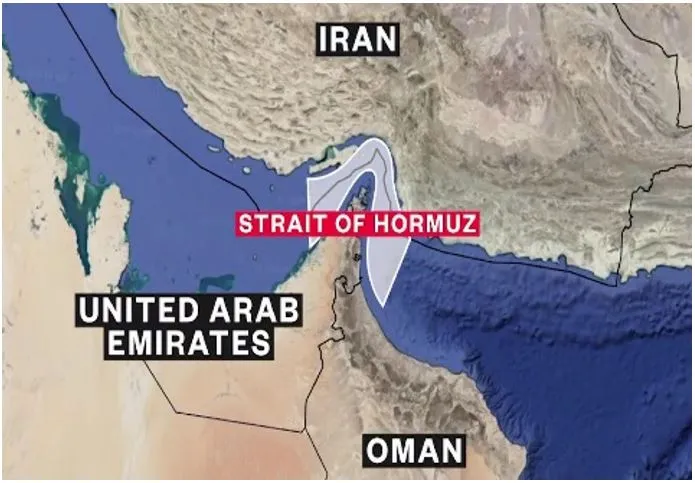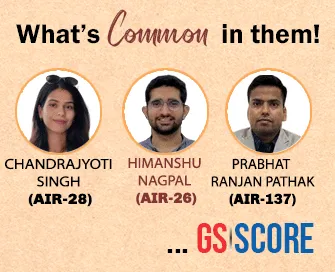

16th June 2025 (10 Topics)
Mains Issues
Context
Rajasthan has successfully piloted and expanded a Cash Plus model that integrates conditional cash transfers (via PMMVY extension) with Social & Behaviour Change Communication (SBCC) across five tribal districts. This model aims to improve maternal and child nutrition and serve as a blueprint to achieve Sustainable Development Goals (SDGs)
Converging Cash Transfers with Behaviour Change for Nutrition and Gender Equity
Rationale & SDG Alignment
- Nutrition Crisis Focus: India carries nearly one-third of global undernourished children; 18% low birth weight rate; one-fifth of children under five are wasted
- Global SDG Relevance: Undernutrition among mothers and infants negatively impacts SDGs 2 (Zero Hunger), 3 (Good Health), and 5 (Gender Equality).
- Evidence Base: Global studies show that cash + SBCC yields stronger outcomes than standalone interventions.
Implementation Framework
- Expanded Eligibility: Rajasthan’s model includes second-time pregnant women, supplementing PMMVY’s first-child focus
- Conditional Cash Component: Delivered through a unified registry and auto-enrolment, with disbursement tied to compliance during pregnancy and infancy
- SBCC Strategy: Multi-channel approach including interpersonal counselling, community mobilisation, mass media, digital messaging, and frontline worker job aids
Target Districts & Outreach
- Pilot Districts: Baran, Banswara, Dungarpur, Pratapgarh, Udaipur – all tribal and nutrition-vulnerable areas
- Coverage & Scale: Cash transfers reached ~200,000 second-time pregnant women; exposure to ?4 SBCC platforms increased from 50% (2021) to over 90% (2024)
- State-Wide Expansion: Cash Plus has been scaled to all districts, serving as a viability template
Outcomes & Impact
- Improved Behavioural Metrics:
- Dietary diversity and weight gain during pregnancy
- Higher uptake of ANC, immunisation, and institutional delivery
- Nutrition Outcomes: Early breastfeeding saw a 49% increase; dietary diversity and counselling receptiveness both rose by ~50% .
- Affordability Gains: 80% of women reported better access to nutritious food attributable to increased income and awareness .
Challenges:
- Data integrity issues (maternal mortality under-reporting)
- Geographic inequities impacting tribal areas
- Overburdened community workers and training deficiencies
Recommended Measures:
- Strengthen digitised maternal-health records and mortality tracking
- Integrate Cash Plus with POSHAN Abhiyaan, JSY, ICDS, RMNCH+A
- Invest in SBCC capacity-building for Anganwadi and ASHA workers
- Encourage household and male involvement via targeted campaigns
- Systematic monitoring and third-party evaluations
- Replicate the model in other tribal/backward regions and low-income states


Mains Issues
Context
PM Modi’s visit to Cyprus in June 2025, the first by an Indian Prime Minister in over two decades, comes amid Turkey’s growing support to Pakistan and rising regional tensions. The visit is a strategic outreach to counterbalance adversarial alignments, reinforce India’s presence in the Mediterranean, and leverage Cyprus's EU influence.
India-Cyprus Strategic Alignment: Recalibrating Mediterranean Diplomacy
Cyprus: A Trusted Diplomatic Partner
- Strategic Support in Multilateral Institutions: Cyprus has supported India’s ambitions for permanent UNSC membership, NSG entry, and played a role in India’s successful civil nuclear diplomacy at the IAEA.
- India-EU Bridge via Cyprus: Cyprus is set to hold the Presidency of the EU Council in 2026, positioning it as a key gateway for India to leverage EU institutions and trade architecture.
Turkey-Cyprus Conflict and India’s Balancing Act
- Geopolitical Conflict: Cyprus vs. Turkey: The 1974 Turkish invasion split the island; only Turkey recognizes the Turkish Republic of Northern Cyprus. Cyprus remains under UN Peacekeeping Forces.
- Turkey’s Adversarial Stance Toward India: Turkey has supported Pakistan’s Kashmir position, raised the issue at the UN, and supplied drones to Pakistan, used in Operation Sindoor against India.
- India’s Strategic Response: By visiting Cyprus, India signals a counter-narrative to Turkey and reaffirms its alignment with like-minded democratic partners.
Cyprus’s Strategic Relevance for India’s Geoeconomic Goals
- India-Middle East-Europe Economic Corridor (IMEC): Cyprus is geographically crucial to the IMEC connectivity plan, linking India to Europe via the Middle East. It could host trans-shipment hubs and logistics parks.
- Economic, Maritime, and Energy Cooperation: India seeks to boost private-sector engagement in clean tech, shipping, fintech, and education, using Cyprus as a stepping stone to Mediterranean markets.
Comprehensive Analysis & Way Forward
India’s outreach to Cyprus signifies multi-vector diplomacy—balancing adversarial pressures (Turkey-Pakistan axis) while building enduring partnerships. Cyprus’s EU role, geostrategic location, and economic openness make it a valuable partner in India’s Act East Europe framework.
India’s long-term interests lie in:
- Institutionalizing strategic dialogue with Cyprus
- Expanding the IMEC footprint via Cypriot ports
- Strengthening India-EU economic convergence through a pro-India ally
- Using such diplomatic visits as signals to adversarial actors


Mains Issues
Context
On June 15, 2025, India marks the fifth anniversary of the Galwan Valley clash, which led to the death of 20 Indian soldiers and redefined the trajectory of India-China relations. The event served as a watershed moment in India’s defence preparedness, infrastructure development, and diplomatic engagement along the Line of Actual Control (LAC).
Five Years Since Galwan: Recalibrating India’s Border Defence and Strategic Posture
Galwan 2020: The Strategic Turning Point
- Incident Summary: On June 15, 2020, 20 Indian soldiers were martyred in violent clashes with Chinese PLA forces in Galwan Valley, Eastern Ladakh.
- Impact: This marked the first fatal confrontation in 45 years between the two nations and exposed the fragility of bilateral border management protocols.
Military Reforms and Emergency Preparedness
- Rapid Military Repositioning
- High-altitude deployment of troops and acclimatized reserves across Eastern Ladakh, Arunachal, and Sikkim.
- Enhanced stockpiling of extreme weather gear, winter rations, and armaments.
- Emergency Procurements
- Utilised fast-track procurement of UAVs, surveillance systems, and light artillery under Emergency Procurement Powers.
- Enhanced high-altitude medical support and air evacuation systems.
Border Infrastructure Expansion
- Budgetary Commitment
- Union Budget 2025–26: ?6.81 lakh crore allocated to defence (9.53% increase).
- ?7,146 crore to BRO for road and tunnel development.
Major Projects Executed
- Completion of 75 BRO projects worth ?2,236 crore in 2024.
- Key assets:
- Umling La: Highest motorable road (19,024 ft)
- Nyoma Airfield and Shinku La tunnel (strategic access to Zanskar)
- Roads in Ladakh, Arunachal, Sikkim, Himachal Pradesh
Digital and Civic Integration of Border Areas
- Deployment of 4G telecom services to remote villages like Galwan and Demchok, enabling:
- Telemedicine and online education
- Access to PM-Gati Shakti and digital governance
- Boost to eco-tourism and digital entrepreneurship
Strategic Implications and Evolving Posture
- Galwan has institutionalised distrust of China within Indian military doctrine.
- India is adopting a forward defence and permanent vigilance
- Border management has transitioned from reactive to proactive, integrating infrastructure, diplomacy, and technology.
Strategic Analysis
- The Galwan clash permanently altered the India-China strategic calculus.
- India has adopted a whole-of-government approach combining military resilience, infrastructure development, and diplomatic engagement.
- Border villages are being mainstreamed into national development priorities, deterring territorial vacuum and external influence.
Way Forward
- Codify New Border Protocols – Create enforceable rules of engagement with PLA under international scrutiny.
- Expand IMINT and SIGINT Assets – Strengthen satellite and aerial surveillance across the LAC.
- Institutionalize BRO-Civilian Linkages – Convert infrastructure assets into dual-use economic corridors.
- Strengthen Strategic Partnerships – Bolster ties with QUAD, ASEAN, and Russia to counterbalance China’s assertiveness.
PYQ:Q. China’s growing presence in the Indian Ocean Region is a cause of concern for India and regional stability. Discuss the implications and steps taken by India in this regard. (250 words) (2023) |


Mains Issues
Context
A high-level expert committee chaired by Principal Scientific Advisor Ajay Sood has recommended rolling back India's 2015 policy mandating the installation of Flue Gas Desulphurisation (FGD) units in all coal-fired thermal power plants (TPPs). This proposal comes in the wake of low compliance rates, financial concerns, and a recent Ministry of Environment notification deferring implementation deadlines.
What is Flue Gas Desulphurisation (FGD)?
- FGD is a pollution control technology designed to remove Sulphur Dioxide (SO?) from flue gases emitted during the combustion of fossil fuels in thermal power plants.
- Types of FGD technologies:
- Dry Sorbent Injection: Involves powdered limestone.
- Wet Limestone Scrubbing: Forms gypsum, widely used.
- Seawater Scrubbing: Used in coastal plants.
Why SO? Control is Necessary?
- SO? contributes significantly to 5 pollution via secondary particulate formation.
- Major contributor to respiratory diseases, acid rain, and climate change.
- According to modelling studies, 15% of India’s PM2.5 is attributed to coal, and 80% of that is due to SO? emissions.
Status of FGD Implementation in India (As of April 2025)
- Mandate issued in 2015 to all 537 coal-fired TPPs.
- Original deadline was 2018; later revised to 2027-29.
- As of now, only 39 plants have installed FGDs.
- New installations take approximately two years.
Economic and Policy Challenges
- Estimated cost: ?1.2 crore per MW.
- Total estimated cost for planned capacity addition: ?97,000 crore.
- Tariff impact: Around ?0.72/kWh, largely from fixed costs.
- Government cited public health, affordability, and emissions balance in evaluating the rollback.
Broader Environmental and Policy Linkages
-
- Links with Air (Prevention and Control of Pollution) Act, 1981.
- Compliance critical for India’s Paris Agreement NDCs and air pollution reduction commitments.
PYQ:Q. Which of the following are the reasons for the formation of smog in urban areas? (2020)
Select the correct answer using the code below:
|


Prelims Articles
Context
Heightened tensions between Iran and Israel–U.S. have triggered renewed threats from Iran to block the Strait of Hormuz, a vital chokepoint through which approximately 20–21 million barrels of oil daily pass (~20–25% of global seaborne oil)
Strait of Hormuz
- Strategic Importance of the Strait
- Connects the Persian Gulf with the Gulf of Oman and Arabian Sea.
- Facilitates transit of ~1/5 of global oil and 1/3 of LNG Narrowest width ~21 nautical miles; shipping lanes just 3.2?km wide
- Iran’s Geopolitical Leverage
- Controls northern maritime approaches, with missiles, fast-attack boats, and mines enabling asymmetric power – the A2/AD doctrine
- Historical threats surfaced in 2012, 2019, and 2025 amid sanctions or attacks .
- UNCLOS stipulates “transit passage” rights, making total blockade illegal—though Iran could still disrupt shipping
- Global Consequences
- Even limited disruption could push crude prices above $100/barrel, raising global inflation and impacting energy security
- Surge in shipping insurance costs and rerouting, as seen with tanker avoidance and convoy measures
- Initiatives like the EMASoH coalition and strategic reserves may partially stabilize markets
- Iran’s Strategic Constraints
- Severe economic self-harm: oil revenue constitutes ~65% of Iranian government earnings; blockade could destabilize its economy and internal stability.
- Regional tensions: Oman and GCC nations may oppose such moves, with US-led naval deployments ready to reopen closure



Prelims Articles
Context
The Government of India has recently relaxed Special Economic Zones (SEZ) rules to attract investment in domestic semiconductor and electronics manufacturing, a sector crucial for reducing import dependence and securing supply chains. This move complements the existing Semicon India Programme launched in 2022 with a financial outlay of ?76,000 crore.
Semiconductors: Strategic Importance
- Definition: Semiconductors are materials with conductivity between conductors and insulators; they are the core components of integrated circuits (ICs) or microchips.
- Applications: Found in smartphones, computers, automobiles, defence systems, AI infrastructure, IoT devices, etc.
- Strategic Resource: Post-COVID-19, countries realized the vulnerability of global supply chains, especially with China producing ~35% of the world’s chips (2021).
- National Security Link: Disruption in chip supplies can impact defence, critical infrastructure, and strategic autonomy.
Relaxation in SEZ Rules
- Previous Restriction: SEZ units had to export at least 51% of their output, and domestic tariff area (DTA) sales were taxed heavily.
- Recent Change: Government has eased DTA access for SEZ-manufactured goods, allowing more flexible domestic sales without significant penalties or procedural bottlenecks.
- Implication: This is expected to facilitate semiconductor fabs and electronics units to sell in India's growing domestic market — a key concern of potential investors.
Semicon India Programme (2022)
- Launched by: Ministry of Electronics and Information Technology (MeitY)
- Outlay: ?76,000 crore
- Components:
- Design Linked Incentive (DLI) Scheme
- Modified Programme for Semiconductors and Display Fab Ecosystem
- Incentives for compound semiconductors and ATMP/OSAT units
- Objective: To develop a self-reliant semiconductor ecosystem including design, manufacturing, packaging, and research.
Global Context
- Countries like the S. (CHIPS and Science Act) and EU (European Chips Act) have also adopted similar subsidy-based approaches to build domestic semiconductor capabilities and reduce dependence on China and Taiwan.
Special Economic Zones (SEZs):Definition & Purpose
Evolution of SEZs in India
SEZ Governance Structure
Status
Key Objectives of SEZ Act
Major Incentives and Facilities
Reform Initiatives
|


Prelims Articles
Context
A major international GWAS published in Nature Genetics has identified a genetic variant near the FOXP4 gene on chromosome 6 linked to increased risk of long COVID. The study highlights the genetic basis of post-COVID complications and the urgent need for more inclusive research involving underrepresented populations like India.
About GWAS (Genome-Wide Association Study):
- GWAS identifies genetic variants, specifically single nucleotide polymorphisms (SNPs), that are associated with specific conditions by comparing genomes of affected vs. unaffected individuals.
Key Finding – FOXP4 Gene Variant:
- The rs9367106 variant near FOXP4 on chromosome 6 increases long COVID risk by 63% in carriers of the “C” allele.
- Stronger FOXP4 expression found in type 2 alveolar cells in lungs — essential for tissue repair and immune response.
- Co-localisation analysis showed a 91% probability linking FOXP4 activity to long COVID susceptibility.
Global Representation in Study:
- Data from 33 groups across 19 countries.
- However, South Asian representation was limited, raising concerns about applicability to Indian populations.
India-Specific Concerns:
- Long COVID prevalence in Indian studies ranges between 45% to 80%, with limited clinical follow-up.
- GenomeIndia Project provides a foundational genetic dataset (10,000 individuals) but is not disease-specific.
- Need for India-specific GWAS due to environmental and metabolic risk variation (e.g., air pollution).
Clinical Implications:
- No diagnostic biomarker yet, but FOXP4 findings may inform future screening, risk stratification, and targeted therapies.
- Emphasises importance of inclusion of genetically diverse cohorts in public health genomics.
Limitations:
- Study predates vaccination rollouts and Omicron variants.
- Evolving definitions of long COVID could introduce misclassification bias.
- Multifactorial etiology — genetics, immunity, and comorbidities jointly determine disease course.
PYQ:
Q. Consider the following statements: (2021)
Which of the statements given above is/are correct?
|


Editorials
Context
India’s rank in the Global Gender Gap Index 2025 released by the World Economic Forum (WEF) dropped by 2 positions, now standing at 131 out of 148 countries. While marginal gains were noted in economic participation and education, the sharp decline in political empowerment pulled down India's overall gender parity score to 64.1%, one of the lowest in South Asia.
Mixed Performance Across Dimensions
- Economic Participation – Incremental Gains: India improved its score in economic participation and opportunity by +0.9 percentage points. The parity in earned income increased from 6% to 29.9%, and labour force participation held at 45.9%, its highest so far.
- Educational Attainment – Stable Progress: India maintained near parity in primary and secondary enrolments. Progress was noted in female literacy, helping marginally push the subindex score upward.
- Health & Survival – Persistent Challenges: India continues to score poorly in sex ratio at birth, a long-standing structural concern. While life expectancy for women is stable, deep-rooted socio-cultural issues remain unaddressed.
Political Empowerment as the Weakest Link
- Decline in Parliamentary Representation: Women’s representation in Parliament fell from 14.7% to 13.8%. This marks the second consecutive annual decline, impacting the political subindex adversely.
- Shrinking Ministerial Participation: The percentage of women in ministerial positions declined from 5% in 2023 to 5.6% in 2025, further highlighting the lack of political space for women.
- Delayed Implementation of Women’s Reservation: Although the Women’s Reservation Act was passed in 2023, its actual implementation is deferred to 2029, post the Census and delimitation exercise, delaying institutional reform.
The Road to Gender Equity
- Beyond Index Rankings – Structural Reforms Needed: Climbing global indices should not be the end goal. Institutional change, political will, and societal transformation are crucial for real parity.
- Political Parties and Voluntary Action: There is no legal barrier preventing political parties from fielding more female candidates now. Proactive internal reforms could fast-track representation even before 2029.
- Bridging Policy-Implementation Gap: India’s challenge is not the absence of laws, but the ineffective operationalisation of existing gender policies. Comprehensive monitoring and cross-sectoral integration are essential.
Practice Question:
Q. India’s continued poor performance in the Global Gender Gap Index reflects deeper structural barriers to gender equality, especially in political representation. Critically evaluate in the context of recent legislative developments and implementation challenges.


Editorials
Context
A recent aircraft accident has spotlighted deep-rooted flaws in India’s aviation safety framework. Despite being a statutory body, the Aircraft Accident Investigation Bureau (AAIB) lacks true autonomy, raising concerns about conflict of interest, institutional opacity, and the absence of systemic accountability.
Structural and Institutional Flaws
- Conflict of Interest Undermines AAIB’s Autonomy: The AAIB, though autonomous on paper, functions under the Ministry of Civil Aviation (MoCA), which also oversees airline operations through DGCA, thereby creating a regulatory-investigative conflict that compromises objectivity.
- Regulatory Capture and Suppressed Recommendations: The Air Marshal J.K. Seth Report (1997) highlighted deep flaws—fragmented oversight, inadequate training, and regulatory capture—yet was buried, showing a systemic aversion to inconvenient truths.
- Comparison with Railways Lacks Parity in Practice: Unlike the Railway Safety Commissioner, who operates independently of rail operators, aviation investigations are dominated by the same body that regulates airline functioning, diluting credibility.
Operational Failures and Data Misrepresentation
- Reactive Safety Culture, Not Preventive: Recent incidents—including helicopter crashes, flying school accidents, and weather-related flight deviations—highlight India’s firefighting mind-set, lacking proactive risk identification and mitigation frameworks.
- Pilot Blame as a Convenient Closure Mechanism: Investigative conclusions often cite “pilot error”, which expedites insurance settlements and avoids scrutiny of other accountable bodies like ATC, airline management, and maintenance agencies.
- Manipulated Reporting and Lack of Transparency: Contradictions in reports (e.g., cloud cover cited without meteorological evidence) and denial of public access to data (IX611 case) reflect a system that protects institutions over people.
Legal Misuse and Reform Imperatives
- Misuse of AAIB Findings in Criminal Proceedings: Despite Rule 5 of the Aircraft (Investigation of Accidents and Incidents) Rules, 2017 mandating safety-focused investigations, police and judiciary misuse reports for legal attribution of blame.
- Rule 19(3) Perpetuates Blame Culture: The rule empowers the DGCA to penalize pilots for any error, undermining the “no-blame” culture necessary for open incident reporting and systemic correction, unless gross negligence is proven.
- Reform Blueprint for Institutional Credibility:
- Independent AAIB and DGCA accountable to Parliament
- No parallel committees undermining investigations
- Legal separation of AAIB findings from criminal trials
- Amendment of Rule 19(3)
- Appointment of an aviation ombudsman for report audits
Practice Question
Q. India’s aircraft accident investigation framework suffers from institutional capture and regulatory opacity, undermining public trust and aviation safety." Critically analyze the structural and legal reforms needed to ensure transparency and accountability in the aviation safety ecosystem.


Editorials
Context
India lacks a flagship international fellowship programme akin to the Schwarzman Scholars in China. This absence raises critical questions about Western academic and philanthropic engagement with India, influenced by long-standing perceptual biases, underinvestment in narrative-building, and institutional gaps within Indian higher education
Historical Perceptions and Strategic Oversight
- Colonial-Era Filters in Western Perception: American consciousness, shaped through colonial British narratives, historically viewed India as remote and spiritual, unlike China, which was seen as revolutionary and strategic — a contrast that influenced institutional investments.
- Isaacs’ Theory of “Scratches on the Mind”: Harold R. Isaacs’ seminal 1958 work illustrated the long-standing psychological residue in American elites — where China emerged as a site of fascination and urgency, and India as peripheral and chaotic.
- India's Cold War Ambiguity: India’s non-aligned posture during the Cold War kept it outside the West's ideological and strategic frameworks, reducing institutional curiosity and engagement compared to China, which was either seen as a threat or opportunity.
Reclaiming the Narrative: India’s Response to China’s Strategic Influence:
- China’s Soft Power Infrastructure:: China invested in global narratives through Confucius Institutes, think tanks, and university partnerships, while India’s soft power initiatives remained sporadic, underfunded, and bureaucratically hampered.
- Symbolism of the Schwarzman Programme: The Schwarzman Scholars programme at Tsinghua University is both a product of China’s state-backed academic diplomacy and the West’s readiness to embrace its transformation narrative.
- India’s Missed Opportunity for Global Storytelling: India’s rich democratic and developmental trajectory has not been strategically narrated or institutionally leveraged to create compelling platforms for international engagement and leadership training.
Institutional Gaps and the Way Forward
- Fragmented India-Focused Academic Infrastructure: Unlike China Studies, Indian studies in Western universities are scattered across disciplines like religion or anthropology, often ignoring India’s modern geopolitical, technological, and strategic relevance.
- Absence of a World-Class Indian Host Institution: India lacks an institution that matches Tsinghua’s academic stature, global connectivity, and policy influence — a prerequisite for hosting a high-caliber international fellowship.
- Need for Strategic Narrative and Global Intellectual Presence: India must assert its voice in global academia, not just through GDP growth or cultural exports, but via serious intellectual and institutional engagement to shape future leadership perceptions.
Practice Question:
Q. The absence of a flagship global leadership fellowship based in India reflects deeper structural and narrative shortcomings.” Critically examine this statement in the context of India’s soft power diplomacy and global academic presence.




